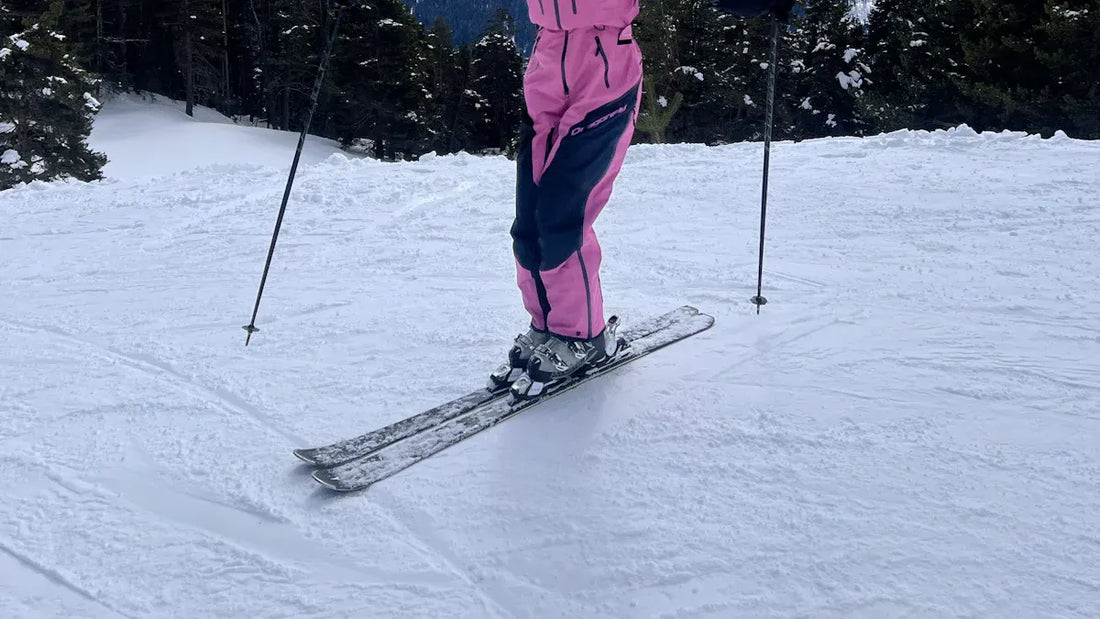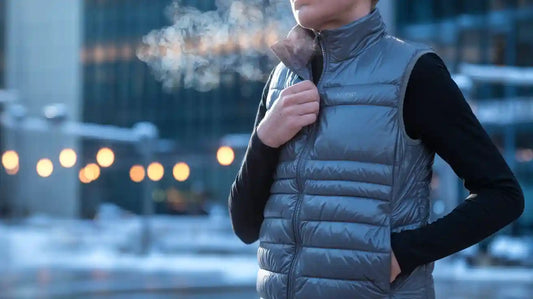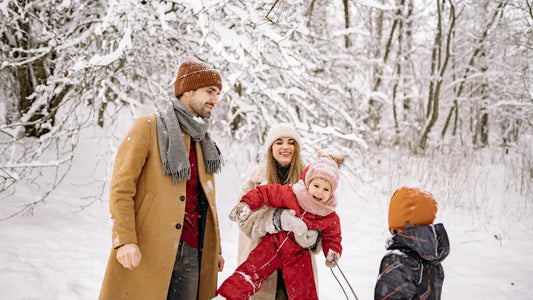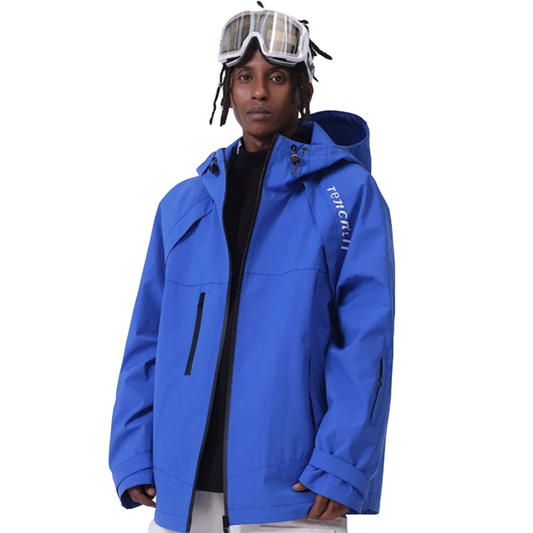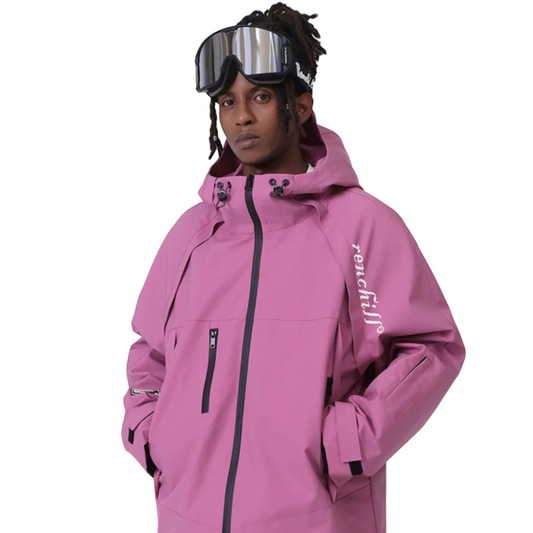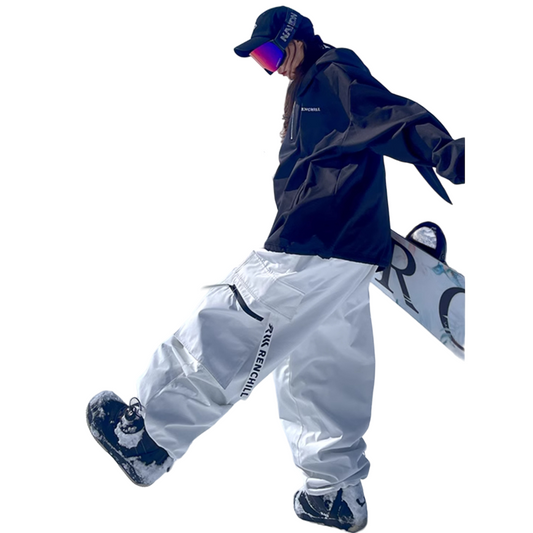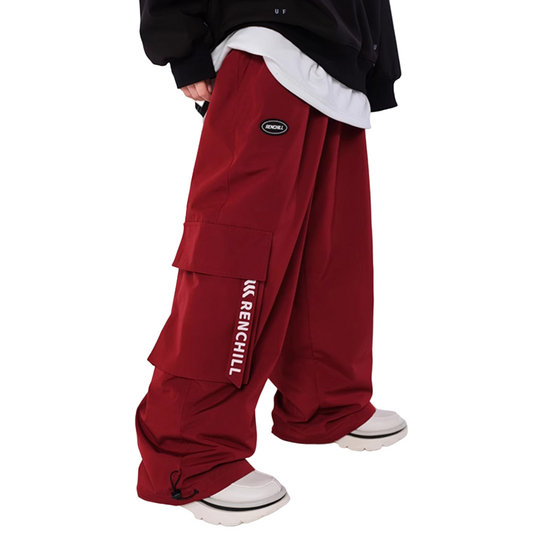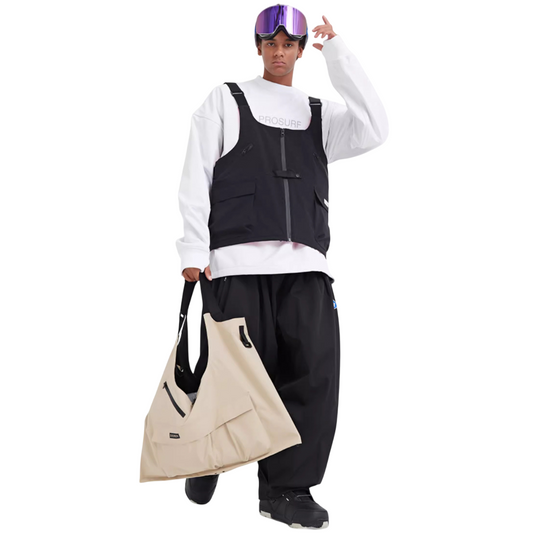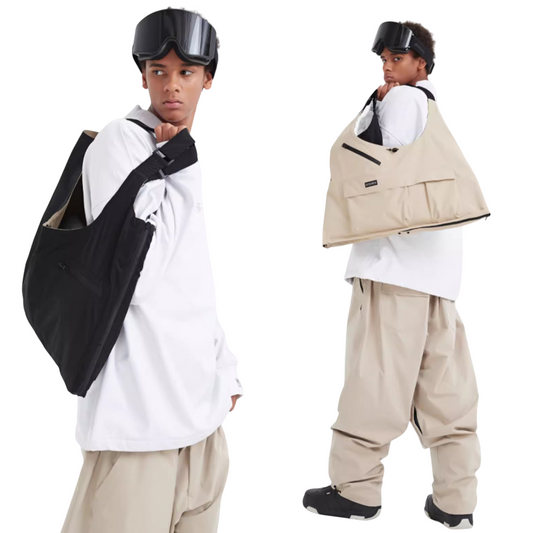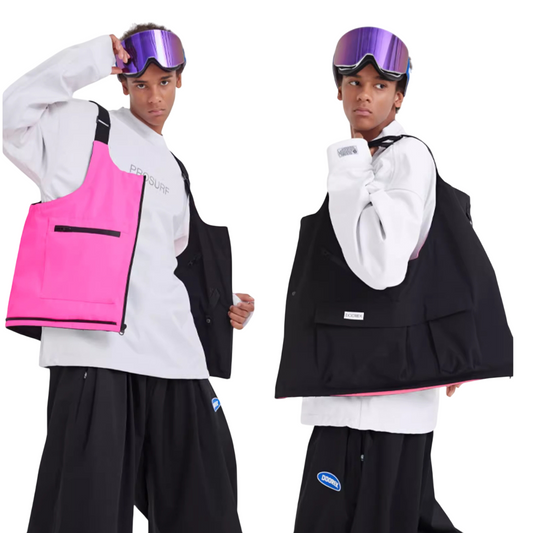You want to find the best ski bibs for your body type and skiing style. Fit and comfort matter for both warmth and performance. The right ski bibs boost your performance on the mountain. SNOWMOCACA offers top options for ski and skiing. Enjoy free shipping on orders over $99 when you shop for the best ski bibs.
Key Takeaways
- Choose ski bibs that match your body type by considering fit features like adjustable straps, stretchy fabrics, and inseam lengths to stay comfortable and warm.
- Pick ski bibs based on your skiing style and conditions—insulated bibs for cold resort days, and breathable, stretchy shells for active backcountry skiing.
- Look for bibs with good waterproofing, ventilation, and storage pockets to keep you dry, comfortable, and organized on the slopes.
Body Type and Fit
Common Body Types
When you shop for ski bibs or ski pants, your body type plays a big role in finding the right fit. Skiers come in many shapes and sizes. Here are some common body types and how they affect your choice:
- Slim: You may find that many ski pants and bibs feel loose around the waist or hips. Look for adjustable features to get a comfortable fit.
- Athletic: If you have broad shoulders or muscular legs, you need ski bibs and pants that allow movement without feeling tight. Stretchy, breathable fabrics help.
- Curvy: You might notice that many bibs and pants feel snug around the hips or buttocks. Some bibs leave gaps above the backside or feel too tight when you add layers.
- Tall: Standard inseams may feel too short, causing the pants to ride up and let snow in. Look for brands that offer tall lengths.
- Short: Long inseams can bunch up at the boots, making movement awkward. Shorter inseam options help you get a better fit.
Tip: Many ski bibs and pants are designed for athletic or straight-hipped body types, so curvy or shorter skiers may need to look for brands with more inclusive sizing.
Fit Tips for Each Shape
Getting a comfortable fit in ski bibs or ski pants means more than just picking your usual size. You want a snug fit that does not restrict your movement. Here are some practical tips for each body type:
- Curvy skiers often find bibs too tight at the hips or chest. Sizing up can help, especially if you plan to wear layers underneath. Look for bibs with stretchy materials and adjustable suspenders.
- Tall skiers should choose bibs or pants with longer inseam options. Brands like Burton offer short, regular, and tall lengths to help you find the right fit.
- Short skiers benefit from shorter inseam choices. This prevents the pants from bunching at the boots and keeps snow out.
- If you have an athletic build, focus on bibs and pants with four-way stretch fabrics. These allow for a full range of motion and a comfortable fit.
- Adjustable straps and articulated knees improve comfort and mobility for all body types. Drop seats or side zips make bathroom breaks easier, especially for women.
Experts say that finding a snug but non-restrictive fit in ski bibs is more complex than with pants. You need to consider your torso length, waist, and chest. Try on several bibs to see which one fits your shape best. If you shop online, choose stores with free returns so you can test different options at home. Adjustable features like Velcro straps and built-in waist cinches help you tailor the fit to your body. Make sure your bibs or pants allow freedom of movement in the hips and legs. Good stretch in the waist and chest areas is key for a comfortable fit.
Inseam and Waist Considerations
Inseam and waist measurements can vary a lot between ski bib brands and models. Plus-size ski bibs often have a higher rise for better midsection coverage and support. Many brands offer multiple inseam lengths, such as short, regular, and tall, to help you find pants that reach past your ski boots and keep snow out.
|
Body Type |
Inseam Tip |
Waist Tip |
|---|---|---|
|
Slim |
Look for adjustable waists |
Choose pants with cinch features |
|
Athletic |
Try regular or tall inseams |
Stretchy waistbands help fit |
|
Curvy |
Size up for comfort |
Higher rise offers better coverage |
|
Tall |
Pick tall inseams |
Adjustable straps help fit |
|
Short |
Choose short inseams |
Avoid excess fabric at the waist |
Ski bibs and pants for women often have a more contoured fit, with a tapered waist and wider hips. Some women's bibs include drop seats, while men's pants may have front flies. Because sizing can change between brands, always measure your waist and hips and check the brand's sizing chart. Adjustable features like Velcro waist straps or stretchy back panels help reduce extra fabric and improve the fit around your waist.
Note: Always try on ski bibs or pants before you buy, or order from brands with easy returns. This helps you find the most comfortable fit for your body type.
Best Ski Bibs for Different Needs
Resort vs. Backcountry
You need to match your gear to your skiing environment. The best ski bibs for resort skiing often differ from those for backcountry adventures. At the resort, you spend more time on lifts and in colder conditions. Insulated bibs and insulated ski pants work well here. They trap heat and block wind, so you stay warm during long chairlift rides. Many skiers choose insulated ski pants or insulated bibs for their warmth and comfort on cold days.
Backcountry skiing demands more versatility. You climb, hike, and move more, so you need gear that breathes and stretches. Soft shell bibs and stretch shell bibs offer better mobility and breathability. These bibs use stretchy fabrics that let you move freely. They also help you avoid overheating during uphill climbs. While soft shell bibs feel comfortable and flexible, they may not protect as well against heavy snow or wet weather. Stretch shell bibs balance weather resistance, comfort, and range of motion, making them a top pick for mixed conditions.
|
Type of Bib |
Best For |
Key Features |
Limitations |
|---|---|---|---|
|
Insulated Bibs |
Resort, cold weather |
Warmth, wind protection |
Less versatile, can overheat |
|
Soft Shell Bibs |
Backcountry, spring |
Breathability, stretch, comfort |
Less weatherproof, not for storms |
|
Stretch Shell Bibs |
Mixed, powder days |
Mobility, waterproof, and versatility |
Less durable than hard shells |
Tip: Choose insulated ski pants or bibs for cold, windy days at the resort. Pick soft shell or stretch shell bibs for active backcountry skiing where breathability and movement matter most.
Powder and Cold Weather
Deep powder and freezing temperatures challenge every skier. You want snow bibs that keep snow out and lock in warmth. Ski bibs cover your waist and chest, so they block snow from sneaking in during falls or deep turns. This extra coverage gives you more warmth than regular ski pants. Many users say that insulated bibs like the Helly Hansen Legendary Insulated or The North Face Freedom Bib keep them warm and dry on the coldest days. These bibs use thick insulation and weatherproof fabrics to trap heat and block wind.
Insulated ski pants also help in cold weather, but they do not protect your upper body as well as bibs. Ski pants can let snow in at the waist, especially if you fall or ski in deep powder. Snow bibs solve this problem with higher coverage and secure straps. Stretch shell bibs perform well in powder, too. They combine waterproof protection with flexibility, so you stay dry and comfortable even when skiing hard.
Note: Ski bibs give you better snow protection and warmth than ski pants. They prevent snow from entering at the waist and add an extra layer over your core. If you ski in deep powder or cold weather, insulated bibs or stretch shell bibs are the best ski bibs for you.
Mobility and Storage
You need gear that moves with you and holds your essentials. The best ski bibs use features that boost mobility and storage. Bibs use shoulder straps instead of a tight waistband, so you get less restriction and more comfort. Stretchy fabrics and articulated knees let you bend, twist, and move without feeling tight. Reinforced knees and seats add durability for active skiing.
For storage, snow bibs beat ski pants. You get more pockets, including chest pockets that are easy to reach. Many bibs have handwarmer pockets, rear stash pockets, and organized storage areas. These pockets keep your phone, snacks, and gear secure and close at hand. Adjustable straps and waistbands help you get a perfect fit, so your bibs stay in place as you ski.
-
Mobility features:
-
No tight waistband—shoulder straps keep bibs up.
-
Stretch fabrics and articulated knees for easy movement.
-
Reinforced knees and seat for durability.
-
Integrated snow gaiters to keep snow out.
-
-
Storage features:
-
Multiple pockets, including chest and handwarmer pockets.
-
Secure, organized storage for gear.
-
Easy access to essentials without removing gloves.
-
Ski bibs offer more comfort and flexibility than ski pants, especially for skiers who need to move a lot or carry extra gear. You get better performance, more warmth, and more storage with the best ski bibs.
SNOWMOCACA Ski Bibs and Features
Product Range Overview
You can find a wide selection of SNOWMOCACA bib ski pants for every type of skier. The collection includes snowboard bib pants, baggy snowboard bibs, and womens ski overalls. You also see options for men, women, and youth. Some bibs have a relaxed fit, while others offer a more streamlined look. If you want extra warmth, you can choose insulated bibs. For those who need flexibility, SNOWMOCACA offers versatile bib ski pants that work for both resort and backcountry skiing. Many snow bibs feature reinforced seams and multiple pockets, so you can carry your essentials with ease.
Adjustable and Inclusive Sizing
SNOWMOCACA designs bibs with comfort and adjustability in mind. You get adjustable suspenders and stretchy panels that help you find the right fit. The brand provides extended sizes up to 6X or 24W, making it easy for curvy women to find snow bibs that fit well. You can select the right length and width for your body shape. Adjustable straps and stretchy fabrics allow you to layer underneath without feeling restricted. SNOWMOCACA also offers detailed sizing charts and easy return policies, so you can shop with confidence.
- Adjustable suspenders and stretchy panels for comfort
- Extended sizes up to 6X or 24W
- Multiple inseam lengths and widths
- Detachable suspenders and zip-off legs on some models
- Practical pockets for storage
Free Shipping Offer
SNOWMOCACA gives you free shipping on all orders over $99. You also get free returns, so you can try different bib ski pants at home without worry. This offer adds value and makes shopping for new bibs or snow bibs more convenient.
How to Choose Ski Pants vs. Bib Ski Pants

Key Differences
When you look at different types of ski pants, you notice some clear differences between ski pants and bib ski pants. The main difference is coverage. Ski pants cover only your waist and legs, while bib ski pants extend up over your torso. This extra coverage gives you more warmth and better snow protection. Industry experts say bib ski pants keep snow out much better, especially if you fall or ski in deep powder. Ski pants rely on your jacket’s powder skirt to block snow. You also find that ski pants are easier to put on and take off, making bathroom breaks simpler.
|
Feature |
Ski Pants |
Bib Ski Pants |
|---|---|---|
|
Coverage |
Waist only, relies on jacket, powder skirt |
Extends over the torso, better at keeping snow out |
|
Warmth |
Generally less warm |
Warmer due to extended coverage |
|
Snow Protection |
Depends onthe jacket powder skirt |
Significantly reduces snow intrusion during falls |
|
Convenience |
Easier bathroom breaks, more freedom |
Harder to remove, less convenient for bathroom breaks |
|
Cost |
Less expensive |
More expensive |
|
Sizing |
Simpler sizing (waist only) |
More complex sizing (waist, torso, shoulders) |
|
Breathability |
Generally good |
May have breathability concerns, but vents help |
|
Pockets |
Fewer pockets |
Better pocketing |
Pros and Cons
You want to know how to choose ski pants that fit your needs. Here are the main pros and cons of each style:
- Ski pants are lighter and less expensive.
- You can put on ski pants quickly and use the bathroom easily.
- Ski pants may slip down, especially when you add layers, so you might need a belt.
- Most ski pants have vents and gaiters to keep snow out and help you stay cool.
- Bib ski pants give you better warmth and snow protection.
- Bib ski pants stay up better and have more pockets for storage.
- Bib ski pants can feel heavier and cost more.
- Using the bathroom in bib ski pants can be tricky unless they have drop seats or special zippers.
- Some bib ski pants have suspenders that may feel uncomfortable if not adjusted correctly.
Tip: Both pants and bib ski pants work well for skiing, but your choice depends on what matters most—warmth, protection, or convenience.
When to Choose Each
You should pick ski pants if you want something easy to wear and quick for bathroom breaks. Ski pants work well for most resort days and for skiers who value comfort and simplicity. Choose bib ski pants if you ski in deep powder, fall often, or want extra warmth and snow protection. Bib ski pants are great for cold, windy days and for skiers who need more storage. If you wonder how to choose ski pants, think about your skiing style, the weather, and how much coverage you need.
Breathability and Technical Features
Waterproofing
You need ski pants and bibs that keep you dry in all conditions. Waterproofing matters most when you ski in wet snow, heavy storms, or deep powder. Most ski pants use waterproof breathable fabric to block water while letting sweat escape. Look for waterproof ratings on the label. A 10,000 mm (10K) rating is the industry standard for ski pants. This level works well for most skiers. If you ski in wet climates or backcountry, choose pants with a 20,000 mm (20K) or higher rating. These pants use advanced waterproof fabrics and fully taped seams for extra protection.

|
Waterproof Rating (mm) |
Use Case |
Effect on Selection |
|---|---|---|
|
3,000 (3K) |
Drizzle, spring days |
Not for heavy snow or rain |
|
5,000 (5K) |
Resort, nice days |
Minimum for ski pants |
|
10,000 (10K) |
Regular riding |
Good for most skiers |
|
20,000+ (20K+) |
Backcountry, wet climates |
Best for high exertion and wet conditions |
Choose waterproof breathable fabric for the best mix of water resistance and comfort. Remember, DWR coatings help water bead off but need reapplication over time.
Insulation
Insulation in ski pants keeps you warm on cold days. You find two main types: short staple and continuous filament. Short staple insulation feels soft but may lose warmth after heavy use. Continuous filament insulation lasts longer and keeps you warmer in wet or windy weather. Thicker insulation adds warmth but can reduce breathability. If you ski in cold climates, pick pants with more insulation. For active skiing, lighter insulation or shell pants work better. Layering under your pants lets you adjust warmth as needed.
|
Insulation Type |
Warmth Retention |
Durability |
Breathability Impact |
|---|---|---|---|
|
Short Staple |
Lower |
1-2 years |
Not ideal for active use |
|
Continuous Filament |
Higher |
Longer lasting |
Better for alpine and wet conditions |
Tip: Match insulation to your activity. Choose more insulation for cold, less for high-output skiing.
Venting and Comfort
Breathability helps you stay dry and comfortable. Good ski pants use vents to release heat and moisture. Inner and outer thigh vents, like those on the Flylow Foxy Bib, give you maximum airflow. Full side zippers and mesh-lined vents also help. Mesh-lined vents stop snow but reduce airflow. Open vents work best for high-intensity skiing. If you ski hard or tour, pick pants with adjustable vents on both sides. Resort skiers may need less venting but still benefit from breathable pants.
-
Key venting features:
-
Inner and outer thigh vents for airflow
-
Full side zippers for quick cooling
-
Mesh linings for snow protection
-
Note: The breathability of ski pants depends on both the fabric and vent design. Always check for vents if you ski in warm weather or do high-exertion activities.
Try-On and Sizing Tips
Range of Motion
When you try on ski pants or bibs, you want to check your range of motion. Start by measuring your waist and hips to pick the right size. Make sure the pants cover your boots to keep snow out. Pay attention to the rise of the bibs for good midsection coverage. Try different styles to see which one gives you the best fit and comfort. Some people like the support of suspenders, while others find them restrictive. Look for stretch panels, articulated knees, and reinforced areas. These features help you move easily and add durability. Try both ski pants and bibs to see which style matches your skiing needs.
- Bend your knees and squat to test movement.
- Lift your legs as if stepping into ski boots.
- Twist your torso to check for tight spots.
Layering
Layering under ski pants or bibs helps you stay warm and flexible. Use a moisture-wicking base layer to keep your skin dry. Add an insulating mid-layer, like fleece, for extra warmth. The outer layer should be your ski pants or bibs, which protect you from wind and snow. Avoid too many layers, as this can limit movement. Adjust your layers based on the weather and your activity level. This system keeps you warm without losing flexibility or comfort.
Reading Size Charts
Always check the brand’s size chart before you buy ski pants or bibs. Measure your waist, hips, and inseam for the best fit. Compare these numbers to the chart to find your size. Try on several styles and sizes, since fit can change between brands. Look for adjustable features, like waist straps or stretchy panels, to fine-tune your fit. Trying multiple pants styles helps you find optimal comfort and performance.
Tip: Take your time when trying on ski pants or bibs. Move around, check the fit, and make sure you feel comfortable before you buy.
Choosing the best ski bibs means knowing your body type, focusing on fit, and considering features like waterproofing, insulation, and storage.
|
Step |
What to Do |
|---|---|
|
Know Your Body Type |
Measure and check the fit |
|
Prioritize Comfort |
Try on different styles |
|
Check Features |
Look for vents, pockets, and coverage |
|
Use Size Charts |
Compare measurements |
SNOWMOCACA offers a wide range, including adjustable designs for every skier. Free shipping on orders over $99 makes shopping easier.
🏂 Shop ski bibs today—claim your free shipping now!
FAQ
How do you know if ski bibs fit correctly?
Try bending, squatting, and twisting. You should feel no pinching or tightness. The bibs should cover your boots and allow easy movement.
Can you wear regular pants under ski bibs?
You should wear a moisture-wicking base layer. Avoid jeans or cotton pants. Base layers keep you dry and warm without adding bulk.
What features matter most for beginners?
Look for adjustable straps, waterproof fabric, and easy-to-use zippers. These features help you stay comfortable and dry while you learn to ski.

